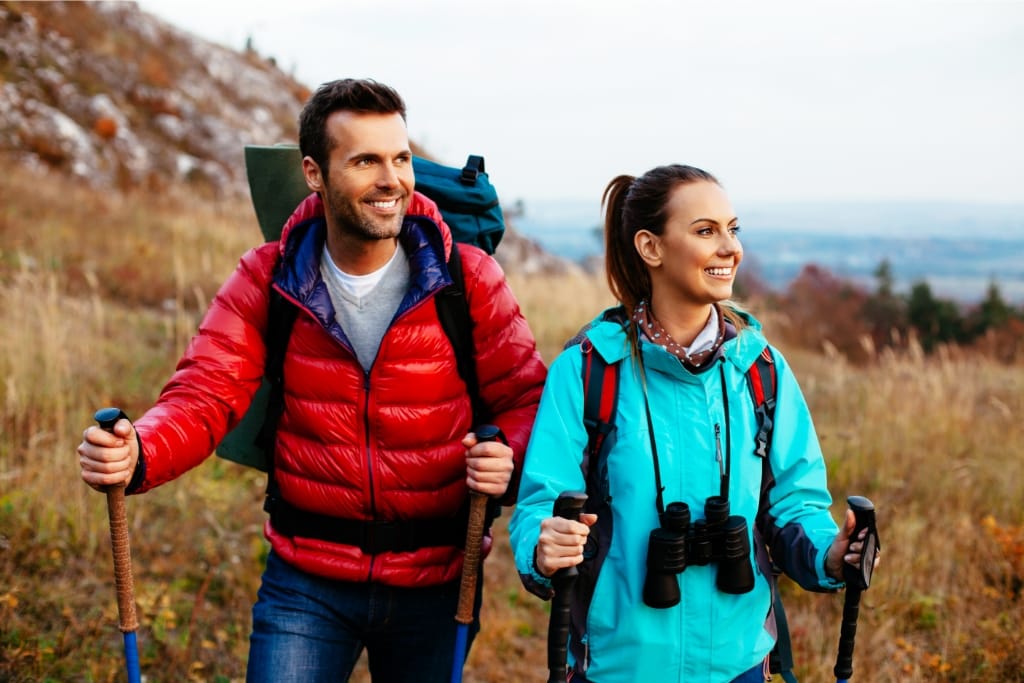Backpacking offers a unique blend of adventure, self-discovery, and a deeper connection to the natural world.
It’s an opportunity to escape the noise of daily life, explore breathtaking landscapes, and test your resilience in new ways.
However, jumping into the world of backpacking without the right preparation can lead to various avoidable obstacles, especially for those just starting.
The experience involves much more than simply strapping on a pack and hitting the trail—every element, from selecting essential gear to navigating unpredictable environments, requires careful consideration.
Even small mistakes can impact your comfort and safety, turning what could be a memorable adventure into a learning curve filled with unnecessary challenges.
To help you start on the right foot and truly enjoy your time in the great outdoors, it’s essential to understand and anticipate the common errors many beginners make.
Equip yourself with these insights to ensure your first backpacking experiences are as fulfilling and trouble-free as possible.
1)) Overpacking
One of the most common mistakes new backpackers make is bringing too much gear.
It’s tempting to pack for every possible scenario, but carrying unnecessary items can quickly weigh down your pack and drain your energy on the trail.
Every extra pound adds strain to your body, increasing the likelihood of fatigue or even injury.
Overpacking often stems from the fear of being unprepared, but with thoughtful planning, you can strike the right balance between preparedness and practicality.
Focus on packing versatile, lightweight items and prioritizing essentials such as food, water, shelter, and clothing appropriate for the weather.
Remember, the key to an enjoyable backpacking trip is efficiency—learning to do more with less not only lightens your load but also makes your trek far more manageable and enjoyable.
2)) Ignoring Weather
Failing to account for weather conditions is another frequent pitfall for new backpackers, and it can lead to discomfort or even dangerous situations.
Weather in the wilderness can be unpredictable, and ignoring forecasts or not preparing for sudden changes can leave you exposed to extreme heat, cold, rain, or snow.
Packing the wrong clothing or gear increases the risk of hypothermia, heat exhaustion, or other weather-related challenges.
Start by researching the climate of your destination and checking updated forecasts before your trip.
Bring layers that allow you to regulate body temperature easily and include items such as a waterproof jacket, thermal layers, and a hat to protect against sun or chill.
Always have a plan in case conditions worsen unexpectedly, from knowing where to find shelter to having emergency supplies.
Being weather-conscious ensures both your safety and comfort, no matter what the trail throws your way.
3)) Poor Footwear Choice
Selecting the wrong footwear is a mistake that can turn a promising backpacking trip into a painful ordeal.
Ill-fitting or inappropriate shoes lead to blisters, sore muscles, and even long-term foot injuries, making every step on the trail increasingly challenging.
Some beginners underestimate the importance of proper footwear, choosing anything from casual sneakers to brand-new boots without breaking them in.
Trail conditions, distance, and carrying a heavy pack all place unique demands on your feet, requiring footwear that provides both support and durability.
To avoid these issues, invest in high-quality hiking boots or trail shoes suited to the specific terrain you’ll encounter.
Ensure they fit well and allow some wiggle room for your toes while securely supporting your heels.
Break them in with shorter hikes before your trip to prevent discomfort and allow your feet to adjust.
A well-chosen pair of boots, combined with moisture-wicking socks, can make a significant difference in keeping your feet happy and your adventure on track.
4)) Skipping Gear Checks
Overlooking gear checks is a mistake that can lead to equipment failures and unnecessary stress when you’re far from civilization.
Many new backpackers make the error of trusting their gear straight out of the box or neglecting to inspect it thoroughly before heading out.
Faulty zippers on tents, malfunctioning stoves, or leaking water bottles can quickly turn a well-planned trip into a frustrating experience.
Before setting out, take time to test every piece of equipment, from setting up your tent to ensuring your cooking system works efficiently.
Look for signs of wear and tear on older gear, such as frayed straps or holes in your backpack, and make any necessary repairs.
It’s also essential to familiarize yourself with how your gear functions and how to fix common issues in the field.
By performing a comprehensive check in advance, you’ll minimize the risk of surprises on the trail and ensure that your equipment supports you throughout your adventure.
5)) Lack Of Hydration
Neglecting proper hydration is a critical mistake that can drastically impact your health and overall backpacking experience.
Dehydration not only saps your energy but can also lead to headaches, dizziness, heat-related illnesses, and impaired cognitive function—all of which are dangerous when navigating the backcountry.
Many beginners underestimate their water needs or fail to plan for sufficient water sources along the route.
While carrying enough water is vital, it’s just as important to have a reliable method for purifying or filtering water from natural sources like streams or lakes.
Research the availability of water on your trail and mark potential refill points on your map.
Monitor your body’s hydration levels during the hike by drinking consistently rather than waiting until you feel thirsty, as thirst is often a sign of already being dehydrated.
By staying mindful of your water intake and making hydration a priority, you can maintain your stamina and fully enjoy the beauty of the wilderness without unnecessary risks.
6)) Not Planning Routes
Failing to plan your routes carefully is a common error that can lead to confusion, wasted time, and even dangerous situations during a backpacking trip.
Some beginners approach their treks with a loose idea of where they want to go, without accounting for trail difficulty, distances, or available resources along the way.
This lack of preparation can result in underestimating how long routes will take, encountering unexpected obstacles, or missing critical landmarks.
To avoid these pitfalls, study detailed maps of the area and consult guidebooks or trusted online resources to understand the trails you’ll be following.
Mark key points on your route, such as campsites, water sources, and emergency exit points, and consider alternate paths in case of unforeseen circumstances.
Utilizing tools like GPS devices, compass navigation, or trail apps can also ensure you stay on track.
Thorough route planning not only allows for a safer and more efficient trip but also gives you the confidence to enjoy the adventure fully, knowing you are prepared for what lies ahead.
7)) Ignoring Safety Tips
Disregarding essential safety precautions is a serious error that can put both novice and experienced backpackers at unnecessary risk.
The wilderness can be unpredictable, with hazards ranging from wildlife encounters to sudden changes in weather or challenging terrain.
Many individuals skip key safety measures, such as informing someone of their itinerary, packing a first-aid kit, or carrying essential navigation tools.
These oversights leave them vulnerable to emergencies they may not be prepared to handle.
Educate yourself about the specific risks of the area you’re exploring, including possible dangers like poisonous plants, cliffs, or avalanches in mountainous regions.
Always bring a reliable map, compass, or GPS device to avoid getting lost, and learn how to use them properly.
Familiarize yourself with basic survival skills, such as building a fire or signaling for help, as these can be lifesaving in critical situations.
By prioritizing safety and taking the necessary precautions before and during your trip, you not only protect yourself but also gain peace of mind, allowing you to focus on enjoying the beauty and freedom of the wilderness.
8)) Carrying Too Little Food
Underestimating your food needs is a mistake that can leave you feeling drained and unable to sustain the energy required for a successful backpacking trip.
Hiking for extended periods burns a significant number of calories, often more than most people anticipate.
Failing to pack enough food or the right variety of nutritional options can result in low energy levels, irritability, and even difficulty concentrating, all of which can make navigating the trail or dealing with challenges much harder.
To prevent this, carefully calculate how much food you’ll need based on the length and intensity of your trip, and include high-calorie, nutrient-dense items that are easy to carry, such as trail mix, jerky, or dehydrated meals.
It’s also wise to pack a little extra in case of delays or unforeseen circumstances.
Balance your meals with a mix of carbohydrates for quick energy, protein for recovery, and fats for sustained endurance.
Taking the time to prepare and plan for your dietary needs ensures that you maintain the strength and stamina required to fully enjoy your outdoor adventure without unnecessary setbacks.
9)) Starting Too Late
Beginning your hike too late in the day is a mistake that can severely limit your progress and increase your exposure to potential hazards.
Starting late often means fewer hours of daylight to complete your planned route, which can force you to rush or risk being caught on the trail after dark.
Navigating in low-light conditions increases the likelihood of accidents, such as missing a trail marker or tripping on uneven terrain, and it can also heighten the danger of encountering nocturnal wildlife.
To avoid these issues, plan your departure time carefully by considering the length and difficulty of your trail, your hiking pace, and sunset times for the region.
Begin your day early to take advantage of cooler morning temperatures and give yourself more flexibility for breaks and unexpected delays.
Being proactive not only enhances your safety but also allows you to enjoy the beauty of the natural surroundings without the stress of racing against the clock.
By ensuring a timely start, you set yourself up for a more enjoyable, efficient, and worry-free backpacking experience.
10)) Underestimating Terrain
Failing to accurately judge the difficulty and variability of the terrain is a mistake that can lead to physical exhaustion, slower progress, or even injury during a backpacking trip.
Many trails have sections that may appear manageable on a map but feature steep inclines, loose rocks, or uneven surfaces that drastically increase the level of effort required.
This oversight is particularly common among beginners who may not be familiar with the unique challenges posed by different types of terrain, such as muddy trails after rainfall or narrow paths along ridgelines.
To prepare, research the specific conditions of your route and practice hiking on similar terrain beforehand to gauge your comfort level and stamina.
Always wear footwear that provides proper support and traction for the surfaces you’ll encounter, and consider using trekking poles for added stability on difficult passages.
Allow extra time in your schedule to account for slower travel through rugged or technical stretches, and stay aware of your energy levels to avoid pushing yourself too hard.
Understanding the demands of the terrain not only helps you avoid unnecessary risks but also ensures a more enjoyable and safer experience as you traverse the variety of landscapes nature has to offer.
Pro-Tip: Investing in a high-quality hiking backpack can make all the difference during your outdoor adventures.
A well-designed pack provides superior comfort with ergonomic straps and padding, reducing strain on your shoulders and back over long distances.
High-quality materials ensure durability, weather resistance, and the ability to handle rough terrain without wear and tear.
Advanced features like multiple compartments, hydration system compatibility, and adjustable suspension systems allow for better organization and a customized fit.
Don’t settle for discomfort or frustration—upgrade your gear with a top-tier hiking backpack and experience the convenience and reliability it brings.
Check out our recommended hiking backpacks here to find the perfect match for your next adventure!
Conclusion
Proper preparation and informed decision-making are key to ensuring a safe and fulfilling backpacking adventure.
By avoiding common errors like neglecting safety precautions, underestimating your food and water needs, starting late, or misjudging the terrain, you set yourself up for success and reduce the likelihood of encountering unnecessary hardships.
Taking the time to research your route, pack carefully, and plan your schedule allows you to focus on the rewarding aspects of the experience—such as breathtaking views, a deep connection with nature, and the personal growth that comes from challenging yourself.
Every trip into the wilderness is an opportunity to learn, grow, and develop skills that will help you in future explorations.
Whether you’re tackling rugged mountains or a peaceful forest trail, being mindful of potential challenges and prepared to address them helps you make the most of your time outdoors.
By respecting the environment and prioritizing your safety, each step you take contributes to a memorable and enriching adventure.
Download Our Free E-book!







